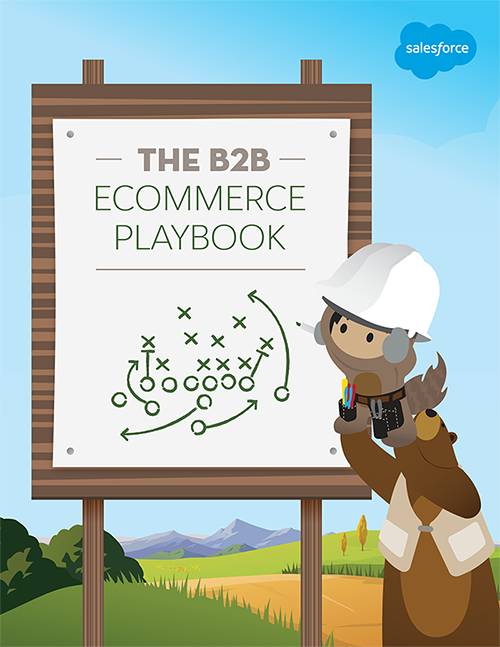There's a revolution happening in B2B commerce.
Conditioned by Amazon and the B2C revolution, B2B buyers have increasingly grown used to the ease of doing business online. The customer relationship is no less crucial, but the nature of relationship desired by the B2B customer is evolving.
At $1 trillion, the global B2B market is four times the size of the B2C market overall. Yet Forrester reports that most B2B companies lag their B2C counterparts in terms of digital maturity and quality of customer experience (Source: Forrester Wave™ B2B Commerce Suites Q2 2015).
B2B commerce is still a challenge in retail and consumer goods
There are two important B2B relationships in the retail and consumer goods industry that could benefit significantly from refreshing the commerce experience:
1. The wholesale retail relationship
2. The consumer brand & retailer relationship.
Let's take a look at those in a bit more detail...
1. The retail & wholesale relationship
Take for example, Adidas. They wanted to extend the same compelling digital experience from their consumer site to their B2B customers of wholesalers and retailers that sell Adidas products to consumers. They had aspirations to transform their direct sales model to manage customer interactions more efficiently and cost effectively with a compelling digital experience.
In the past, the direct sales model was costly and inefficient for Adidas. Since a portion of their B2B customers typically ordered lower volumes of products for their distribution channels or stores, sending dedicated sales reps out to take orders with smaller customers was not sustainable.
So in 2015 they created their B2B portal using Salesforce Commerce Cloud to improve the wholesale customer experience. Today, tens of thousands of Adidas wholesale customers of all sizes use this portal to
- Access, browse and purchase Adidas’s entire product catalog digitally; Adidas no longer offers its paper catalog
- Pre-order merchandise for the upcoming season
- Re-order in-season merchandise
- Manage their accounts (e.g. view order history, invoices, documents, file complaints, returns, track orders, etc.)
2. The consumer brand & retailer relationship
Another example is the B2B relationship between consumer brands and retailers. In the consumer goods (CG) industry, in which 95% of annual sales still happen in stores, the right products need to be on the right shelves at the right price to get into the hands of shoppers. Yet, the best-laid plans of CG companies and retailers still fail.
In our survey of 500 global CG leaders, 52% of them felt marketing and merchandising spend is executed poorly. We uncovered the areas within B2B operations that are most challenging for in-store execution - the top areas being getting new SKUs in store and inventory visibility. We did the math, and it's no exaggeration that millions of dollars are left on the table by neglecting to optimise marketing & merchandising spend and tighten up retail execution.
While improving the B2B commerce experience will enable organisations to tap into significant financial and operational gains, it should not be an improvement made in a silo. Which is why Salesforce incorporates B2B commerce solutions as a key part of the wider Salesforce Customer Success Platform. Because only through combining commerce with marketing, service, and sales, can we truly deliver one consistent brand experience across B2B and B2C, and power intelligent end-to-end journeys that will build stronger B2B relationships.
What next?
Across industries, companies are reshaping their B2B operations. They recognise the opportunity to boost sales and cement customer relationships by building better online and mobile experiences. However, when faced with a variety of options and a growing sense of urgency, just getting started can be a challenge. So how do you embark on this journey to transform your B2B buyer experiences?
Having partnered with leading brands in Retail, Consumer Goods, Manufacturing and beyond, we've observed how the most effective implementations follow six key principles. Read about what is needed to be successful in our latest B2B Commerce playbook.








